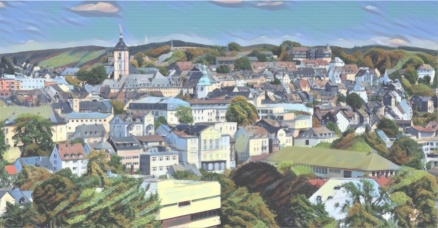Speaker
Description
A baryon-antibaryon pair from electron-positron annihilation is a simple spin entangled system that can be used for studies of time-like electromagnetic form factors, baryon decays and test of discrete symmetries.
A modular approach [Phys.Rev.D 99 (2019) 056008] where the complete angular distributions in such processes are conveniently obtained using products of real-valued matrices representing the initial spin-entangled baryon-antibaryon state and the weak decay sequences. These matrices can be easily rearranged to many decay scenarios.
The approach is being used in several high-profile multidimensional maximum likelihood analyses to study production and decays of strange baryon-antibaryon pairs from $J/\psi$, $\psi(2S)$ and continuum at the BESIII experiment [e.g. Nature 606 (2022) 7912, 64]. The method has demonstrated a potential to significantly increase precision of the measurements. In some cases, such as the polarization of the hyperon-antihyperon pair from charmonia decays, it was a prerequisite to reveal the effects that were averaged out in previous studies.
The formalism describes also the production of charm baryon-antibaryon pairs in electron-positron annihilations. Recently we have included modules that describe baryon semileptonic decays and other processes [arXiv:2302.07665]. Strategies for the studies of the charm baryon-antibaryon pair production and decays will be presented. The formalism is relevant for BESIII and the next generation electron-positron tau-charm factories as well as for the ISR type experiments at BelleII.
| Consent | I consent to recording/broadcasting my presentation. |
|---|

